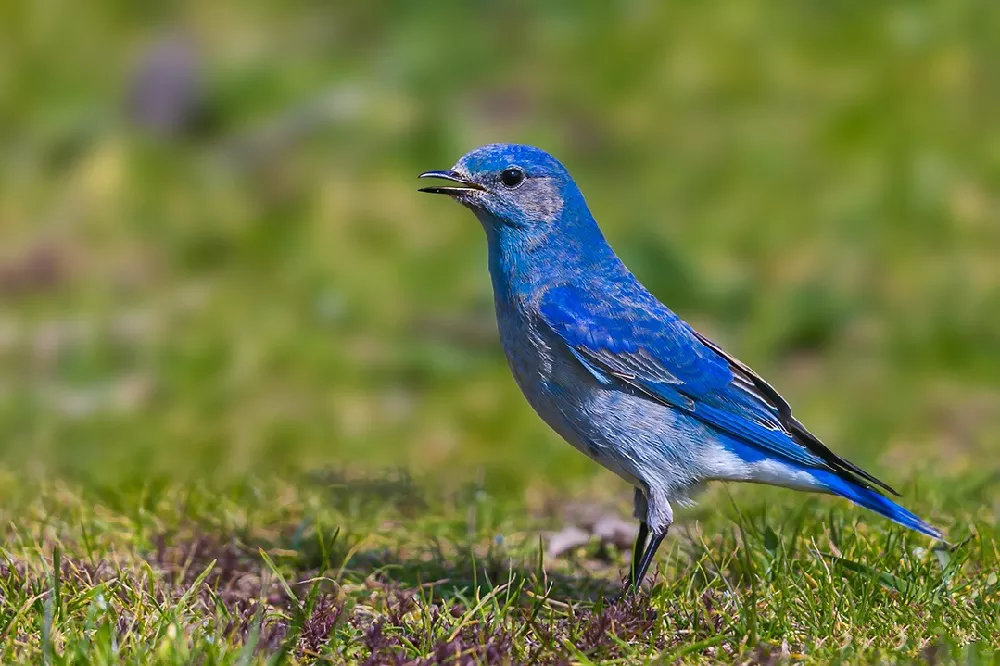Bluebirds are beautiful and colorful birds that are often found in backyard gardens and open fields. Providing a safe and comfortable place for them to nest is essential for their survival, and one of the most important factors to consider when building or buying a bluebird house is the size of the entrance hole. In this article, we will discuss why the size of the entrance hole is so crucial and what size hole is best for bluebird houses.
The Importance of the Right Size Hole for Bluebirds
The size of the entrance hole on a bluebird house is critical for several reasons. First, it helps to keep out larger predators, such as raccoons, squirrels, and even some bird species that might try to invade the nest box. Second, the size of the hole can also determine which species of bird will use the box. Bluebirds prefer smaller holes, while larger holes may attract other bird species such as Tree Swallows or House Sparrows, which can compete with or even harm bluebirds. Therefore, it’s essential to choose the right size entrance hole to ensure that bluebirds will be the primary residents of the nest box.
What Size Hole for Bluebird Houses?
There are three species of bluebirds in North America and they each require a specific size of entrance hole to be able to use a nest box. If you make the hole too small, it will stop bluebirds from entering, but if the hole is too large it will allow European starlings to enter and compete with the smaller bluebirds for the nest box.
Eastern Bluebirds
The ideal size of the entrance hole for an Eastern Bluebird house is 1.5 inches in diameter. This size allows Eastern Bluebirds to enter and exit the box easily while keeping larger predators and other bird species out. It also helps to prevent other bird species from competing with Eastern Bluebirds for nesting sites. In some cases, a slightly smaller entrance hole of 1.25 inches may be suitable, especially if predators or other bird species are a significant concern in the area. However, a hole smaller than 1.25 inches may make it difficult for Eastern Bluebirds to enter and exit the box, and a hole larger than 1.5 inches may attract unwanted visitors.
Mountain Bluebirds
The ideal size of the entrance hole for a Mountain Bluebird house is slightly smaller than that for Eastern Bluebirds. A hole with a diameter of 1.3 inches is the preferred size for Mountain Bluebirds. This size allows Mountain Bluebirds to enter and exit the box easily while keeping larger predators and other bird species out. It also helps to prevent other bird species from competing with Mountain Bluebirds for nesting sites. However, a hole larger than 1.5 inches may attract unwanted visitors, such as House Sparrows or European Starlings, which can compete with or harm Mountain Bluebirds.
Western Bluebirds
The ideal size of the entrance hole for a Western Bluebird house is similar to that of the Mountain Bluebird. A hole with a diameter of 1.3 inches is the preferred size for Western Bluebirds. This size allows Western Bluebirds to enter and exit the box easily while keeping larger predators and other bird species out. It also helps to prevent other bird species from competing with Western Bluebirds for nesting sites. However, a hole larger than 1.5 inches may attract unwanted visitors, such as House Sparrows or European Starlings, which can compete with or harm Western Bluebirds.
Factors to Consider
While the size of the entrance hole is crucial, there are other factors to consider when building or purchasing a bluebird house. Here are a few additional considerations:
1. Depth:
Bluebirds prefer a shallow nesting box, so it’s essential to choose a box that is no more than 8 inches deep.
2. Ventilation:
A bluebird house should have adequate ventilation to keep the nest cool and prevent the buildup of harmful gases. Look for a box with ventilation holes or slots near the top of the box.
3. Mounting:
The box should be mounted on a pole or post, at least 4-6 feet off the ground, and facing an open area or field.
4. Material:
Bluebird houses can be made from various materials, including wood, PVC, or recycled plastic. Choose a material that is durable and easy to clean.
Conclusion
In conclusion, providing bluebirds with a safe and comfortable place to nest is essential for their survival. By selecting the right size entrance hole and considering other factors such as depth, ventilation, and mounting, you can help ensure that bluebirds will be the primary residents of your nest box. Remember, a little attention to detail can go a long way in creating a successful bluebird habitat.
FAQs About Bluebird Houses Size
1. What are the standard dimensions for a bluebird house?
Bluebird houses typically have dimensions of around 5-6 inches in width, 8-12 inches in height, and 8-12 inches in depth. However, these dimensions can vary slightly depending on the specific design and preferences of the builder.
2. What are the ideal dimensions for an Eastern bluebird house?
For Eastern bluebirds, it’s recommended to have a floor size of about 4×4 inches and a height of around 8-12 inches. These dimensions provide sufficient space while also maintaining the cozy environment bluebirds prefer.
3. Can I use an oval hole for a bluebird house instead of a circular one?
Yes, oval-shaped entrance holes are sometimes used for bluebird houses. The dimensions of the oval hole should be approximately 1⅛ inches vertically and 2⅛ inches horizontally. This shape can help deter larger birds and predators while still allowing bluebirds easy access. However, make sure to monitor the bluebird house to ensure the birds can enter and exit comfortably.
Related Topics:


 Facebook
Facebook  Instagram
Instagram  Youtube
Youtube 